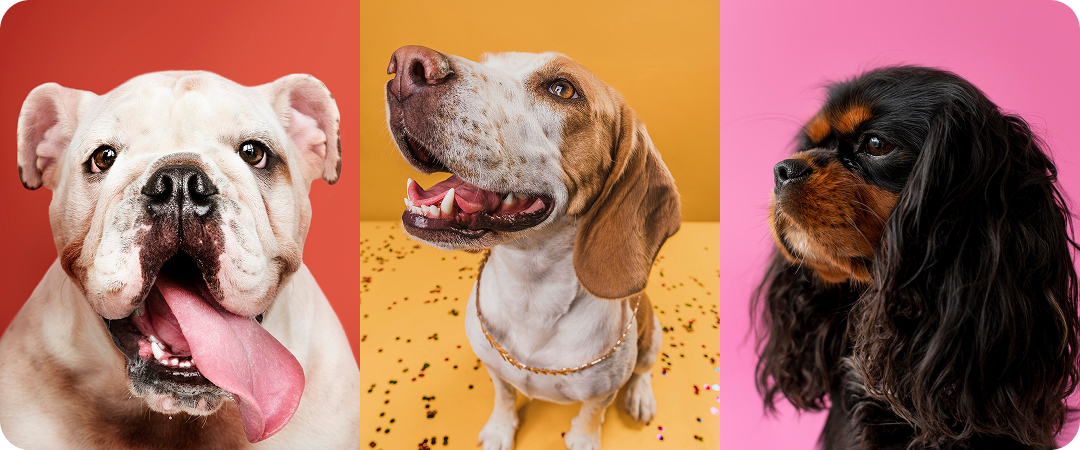Picky eating in dogs frustrates countless pet parents who watch their canine companions refuse perfectly good food while happily consuming questionable items found outdoors. This seemingly contradictory behavior isn't simply obstinance or manipulation—it's a complex interaction of evolutionary, physiological, and learned factors.

The Science of Picky Eating: Understanding Why Some Dogs Are Food Selective
Picky eating in dogs frustrates countless pet parents who watch their canine companions refuse perfectly good food while happily consuming questionable items found outdoors. This seemingly contradictory behavior isn't simply obstinance or manipulation—it's a complex interaction of evolutionary, physiological, and learned factors. Understanding the science behind picky eating can help you address the issue effectively with solutions like TailBlaze Richy Rich Picky Eater Treats.
Evolutionary Factors: Why Selectivity Made Sense
Dogs evolved from opportunistic carnivores who needed to make quick decisions about what was safe to eat. This evolutionary history shaped sensory and digestive adaptations that influence modern food selectivity:
Sensory Detection: Dogs possess approximately 1,700 taste buds (compared to humans' 9,000), but they compensate with an extraordinary sense of smell—up to 100,000 times more sensitive than ours. This olfactory dominance means aroma drives food acceptance more than taste, explaining why dogs reject perfectly nutritious food that lacks appealing scent.
Neophobia: Wild canids display natural caution toward new foods—an evolutionary protection against potential toxins. This inherent "food neophobia" varies among individual dogs but explains why some resist new foods despite seeming hunger.
Macronutrient Detection: Research suggests dogs can detect and develop preferences for specific macronutrient profiles. Many selectively seek foods with higher protein and fat content—nutrients that would have been valuable but scarce in their evolutionary past.
Physiological Factors: The Body's Influence
Physical aspects significantly impact eating behavior and preferences:
Taste Receptor Variations: Genetic differences in taste receptors create individual preference patterns. Some dogs have more receptors for bitter compounds, making them more sensitive to certain flavors in commercial foods.
Gastrointestinal Comfort: Dogs quickly form negative associations with foods that cause digestive discomfort. A dog who appears "picky" may actually be avoiding foods that previously caused subtle digestive upset.
Microbiome Influence: The community of bacteria in your dog's gut actually communicates with the brain to influence food preferences, potentially driving cravings for ingredients that feed specific bacterial populations.
Learned Behaviors: The Power of Experience
Past experiences and environmental factors shape ongoing food attitudes:
Early Exposure Window: Puppies exposed to diverse foods and textures between 4-12 weeks develop more flexible eating habits. Those with limited early exposure often become more selective adults.
Negative Associations: Force-feeding, medicating in food, or presenting food during illness can create lasting aversions, even to previously enjoyed items.
Reinforcement Patterns: Well-meaning pet parents often inadvertently reward pickiness by offering increasingly enticing alternatives when dogs refuse meals, teaching dogs that holding out leads to better options.
Social Learning: Dogs observe other household members (human and animal) and may adopt similar preferences or aversions based on these observations.
Common Picky Eater Profiles
Research and clinical observation reveal several distinct picky eater types, each requiring different approaches:
The True Selective Eater:
- Consistently refuses certain textures or flavors
- Shows clear preferences that remain relatively stable
- Typically maintains adequate weight despite selectivity
- Often has strong genetic or early-experience components
The Learned Picky Eater:
- Becomes increasingly selective over time
- Holds out for treats or table scraps
- Behavior frequently worsens with owner attention
- Usually responds well to consistent routines
The Medical Refuser:
- Shows sudden changes in previously established preferences
- May approach food with interest but then reject it
- Often shows other subtle symptoms like lip licking or swallowing difficulty
- Requires veterinary evaluation to address underlying causes
The Anxiety-Based Refuser:
- Eating patterns change with environmental stressors
- May eat normally when alone but refuse food with audience
- Often shows other anxiety behaviors
- Benefits from stress-reduction approaches
The TailBlaze Richy Rich Solution
TailBlaze Richy Rich Picky Eater Treats are scientifically formulated to address the multiple factors behind picky eating:
-
Irresistible Aroma Profile: Enhanced natural scents target dogs' olfactory preferences, overcoming the initial rejection barrier.
-
Premium Protein Sources: Mutton and mango provide the protein-rich, high-value nutritional profile that aligns with dogs' evolutionary preferences.
-
Texture Optimization: Developed through extensive testing to appeal to texture-sensitive dogs.
-
Appetite Stimulation: Natural flavor compounds gently stimulate appetite pathways in the canine brain.
-
Positive Association Building: The exceptional palatability creates positive feeding experiences that can generalize to other foods when used strategically.
Many pet parents find these treats useful not just as rewards but as training tools to overcome pickiness:
- Crumbling treats over regular food creates a "bridge" to acceptance
- Using treats to establish positive mealtime routines
- Building food engagement through interactive feeding
- Creating positive associations with feeding locations
By understanding the complex science behind picky eating, pet parents can approach the issue with appropriate strategies rather than frustration. TailBlaze Richy Rich treats provide one powerful tool in addressing selectivity while ensuring your discerning dog still receives quality nutrition despite their particular preferences.
Transform mealtime struggles with TailBlaze Richy Rich Picky Eater Treats—because selective dogs deserve nutrition delivered in a format they'll actually enjoy.






